
Полная версия
Pretty Iconic: A Personal Look at the Beauty Products that Changed the World


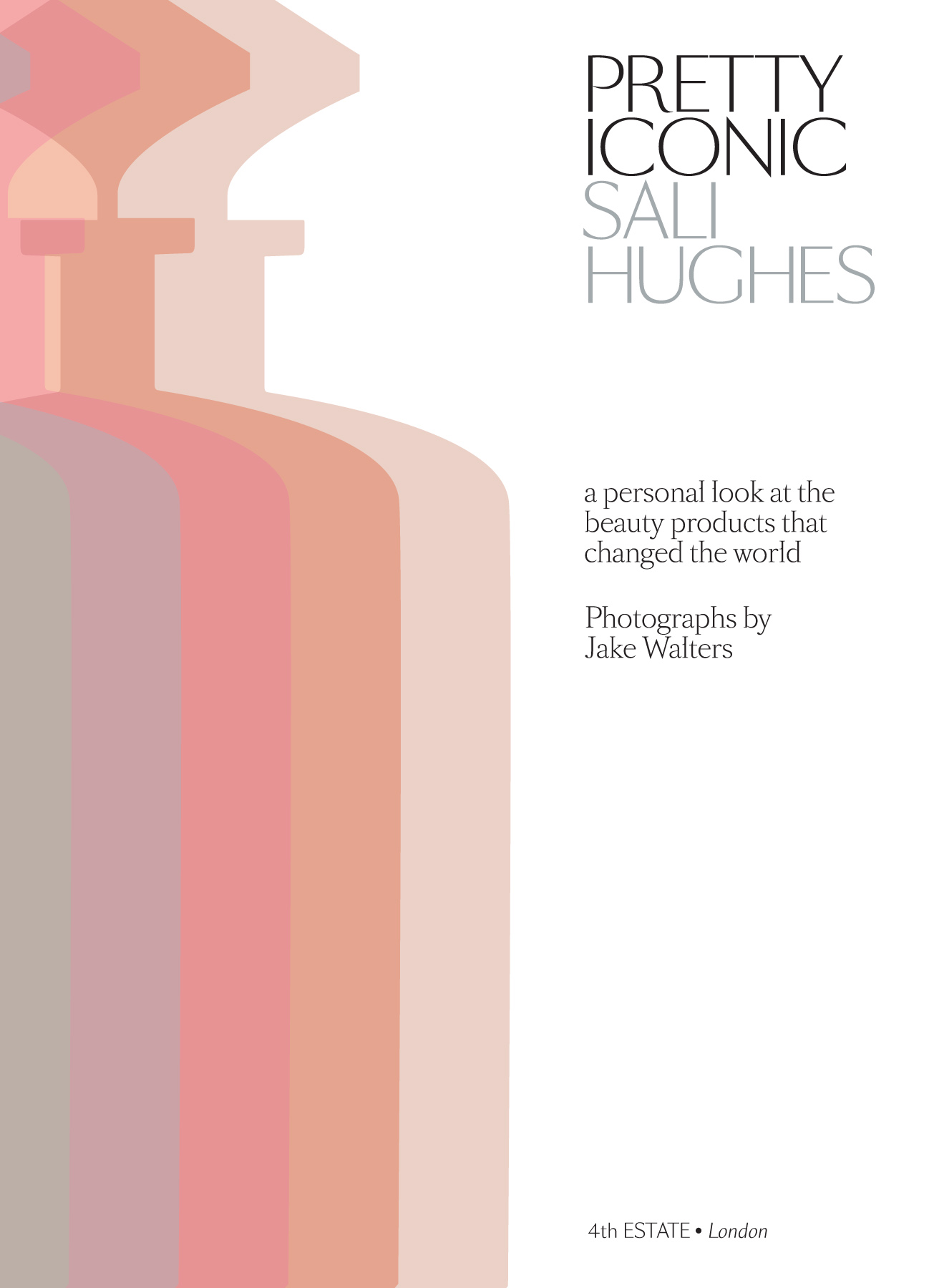
Copyright
4th Estate
An imprint of HarperCollinsPublishers
1 London Bridge Street
London SE1 9GF
www.4thEstate.co.uk
First published in Great Britain by 4th Estate in 2016
Text copyright © Pretty Honest Ltd 2016
Cover credit © Heike Schussler
All photographs © Jake Walters 2016
www.Jakewalters.com
Illustrations by Mel Elliott
www.ilovemel.me
The right of Sali Hughes to be identified as the author of this work has been asserted by her in accordance with the Copyright, Design and Patents Act 1988.
Design and Art Direction by BLOK
www.blokdesign.co.uk
A catalogue record for this book is available from the British Library.
All rights reserved under International and Pan-American Copyright Conventions. By payment of the required fees, you have been granted the non-exclusive, non-transferable right to access and read the text of this e-book on-screen. No part of this text may be reproduced, transmitted, down-loaded, decompiled, reverse engineered, or stored in or introduced into any information storage and retrieval system, in any form or by any means, whether electronic or mechanical, now known or hereinafter invented, without the express written permission of HarperCollins.
Source ISBN: 9780008194536
Ebook Edition © June 2018 ISBN: 9780008194543
Version: 2018-06-12
For Marvin and Arthur
This was Mum’s Ferraris and Pokémon
Contents
Cover
Title Page
Copyright
Dedication
Introduction
The Icons
The Nostalgics
The Gamechangers
The Rites of Passage
The Future Icons
Picture Credits
Index
Acknowledgements
About the Author
About the Publisher
Introduction
In my loft, there’s a red plastic B&Q toolbox filled with make-up no longer fit for purpose but that I’ll never, ever throw away. There’s a dried out, once-black Body Shop eyeliner pen that my mother put in my Christmas stocking circa 1989, which I wore with cut-off Levi’s and a lycra bodysuit to Cardiff’s Square Club. There’s a pot of Clinique face powder in a dreadfully unsuitable shade of pink, that I’d saved at least six weeks’ pocket money to buy before realising it made me look embalmed. The Rimmel lilac eye palette I was convinced made me appear 18, the apricot lip balm bought for me by fourth form squeeze Hywel White, a dry, cracked Kryolan professional concealer palette bought in haste less than a year later, when I heard I’d be making up the Pet Shop Boys, the half-used Prescriptives foundation given to me by my boss because I could never have afforded my own, and the Mary Quant eyeshadows I found in a dusty box in a discount chemist on South Molton Street, and thought I’d won the lottery. These aren’t just products. This isn’t just a toolbox. It’s a time capsule, and everything in it takes me back to a moment, a hope, a mistake, an achievement. These unassuming bits and pieces each have their own significance and collectively make something as potent and meaningful as any long-saved C90 compilation. They’re my beauty mixtape.
But like any true music lover, I always want to hear something new that excites me just as much. And so it is with beauty. Good job, because I’m sent around 2000 new beauty products a year, from designer fragrances and state of the art skincare, to supermarket shampoos and lipsticks costing less than a two pinter of milk – all of them promising something new and extraordinary. It’s an extremely fortunate and wonderful position to be in (teenage me is never far from memory, and believe me, she’s having kittens), but not one without some stress. Storage and eating surfaces aside, I worry constantly that I’ll miss something wonderful. A product so brilliant, so revolutionary and life-changing, that it will deserve to become a beauty icon, used by millions, remembered always, popped in someone’s future treasured toolbox.
But what makes an icon? Quality alone is neither enough nor strictly the point. The beauty products in this book aren’t always, in my view, the best – at least not for me personally. Very many of my all time favourites are not here (and as ever, everything in this book has been chosen by me and me alone, with absolutely no commercial consideration). I happen to prefer By Terry Touche Veloutée and Clinique Airbrush Concealer to the mighty YSL Touche Éclat pen, but in terms of influence, memorability and its creation of an entire beauty category, the latter wins by a country mile. Likewise, you may not love Chanel No 5. But the fact is, you will probably still have an opinion on what is, without question, the towering icon of perfumery. You might not find Estée Lauder Advanced Night Repair ideal for your skin but in all likelihood, the serum you do love would not exist without it. These three items, in their own ways, changed how countless beauty products were designed and used thereafter. They are reference points, or the stars of a beauty ‘moment’, or so familiar and relied upon that they’re practically part of the family.
While to many, beauty products are silly, an irrelevance, the currency of the vain and the shallow, they are, to me, the furniture of our lives. Just as we chart life’s journey through music, food and places, I also attribute the same importance and sentimentality to the beauty products I saw, touched, and smelled all around me. The flipping of a lid on a bottle of Johnson’s baby lotion triggers a Proustian rush. I’m immediately back in my grandmother’s living room, my clean pyjamas warming on the fireguard, the soothing hum of Antiques Roadshow and the rattle of a twin tub washer in the background. I don’t just remember my first kiss, I remember the Miss Selfridge Copperknockers lipstick smeared messily over my cheeks afterwards. My first ever gig was notable not only because I saw The Smiths on their last tour, but because I’d stolen my mum’s Rimmel lipliner and Givenchy Ysatis perfume for this life-changing occasion. A memorable beauty product can transport me to my nan’s backstreet curl and set parlour, my teenage cabin bed, a school disco or my wedding day. When I look back at pivotal moments in my life, I can almost always remember the cosmetics and toiletries that accompanied me, and how I came to be wearing them. These are the lotions, potions, creams, colours and powders that defined how we presented ourselves to the outside world. They were companions at major life events. The perfumes that gave us backbone for important job interviews, the make-up chosen to come on our first dates with a partner, the toiletries taken on family holidays, the little luxury bought with a first pay packet.
It’s easy to forget that these cosy, familiar make-up, skincare and toiletries of our youth were often born from world-changing innovation and where particularly interesting, I’ve tried to provide some context. Likewise, if I feel a product is oft-misunderstood or unfairly maligned, I’ve suggested best practice techniques and tips, on how better to utilise them. In Future Icons are some products that, to me, represent either an unforgettable moment – welcome or otherwise – or a great advance in beauty. Whether history will agree with me remains to be seen.
Most importantly, I should say that my interpretation of the word ‘icon’ is wholly subjective and seen very much through the lens of a 41-year-old British woman and is therefore a shamelessly Western view of products. I absolutely acknowledge that Japanese beauty rituals and technology, for just one example, have always been extremely influential and that in recent years, Korean products have changed our beauty culture, but they don’t have the same personal meaning to me (no doubt they will to our children). Radox, Poison and Sun-In – these are the products that made my life. There will, I hope, be some products you remember from your own upbringing. The shampoo that sat at the corner of your childhood bath, the pot of face cream your mother kept on the bedside table, perhaps. There will no doubt be others that are entirely new to you and equally, some omissions that figure hugely in your past or present but not in my own – I would really love to hear what they are.
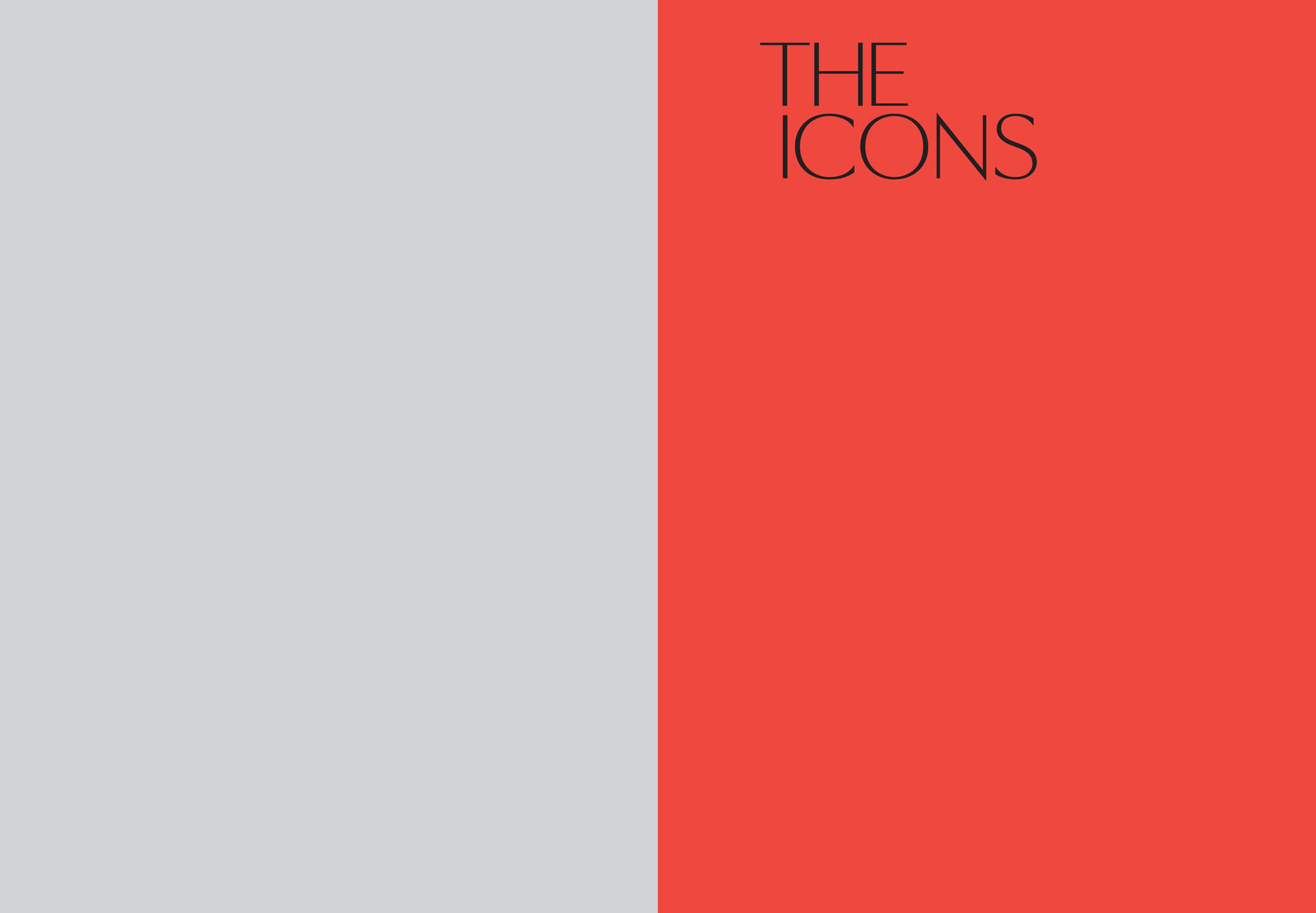
Chanel No 5
In perfume-nerd circles, saying Chanel No 5 is your favourite perfume is as obvious and dreary as declaring Citizen Kane your favourite film, Shakespeare and the Mona Lisa your favourite playwright and painting. But sometimes, things are seen as the best because they simply are. There’s no use fighting a towering icon just to be contrary and interesting. And even if you don’t like No 5 (and very many genuinely don’t – smell is a wholly subjective business), you should still respect this remarkable 94-year-old French perfume and what is arguably the most iconic and recognisable beauty product of all time.
No 5 was created by the extraordinarily clever and talented Russian-French perfumer Ernest Beaux, but, for me, his creation is Coco Chanel from crystal stopper to basenote. The couturier had been obsessed with cleanliness from a young age, but was frustrated with the ephemeral characteristics of fresh-smelling citrus colognes. She wanted something stronger, longer lasting, more characterful, and so Beaux mixed traditional floral extracts with aldehydes – isolated chemicals that artificially gave a clean smell, but stuck around on the skin until bedtime. These synthetics were deemed inferior and tacky in 1921, but Coco gave not a damn. Beaux made up ten versions of the scent, numbered 1–5 and 20–24. Superstitious Coco chose five, her lucky number. She packaged it in a typically unfussy flacon, inspired by men’s toiletries and adorned with nothing more than a square label and simple type – a pretty subversive move in itself, when luxury perfumes came in big, blowsy balloon-atomisers. The No 5 bottle – since then, the subject of works by artists and photographers such as Andy Warhol, Louis-Nicolas Darbon and Ed Feingersh in his portraits of Marilyn Monroe – is as recognisable a French icon as the Eiffel Tower.
The scent itself – powdery, fizzy, sexy, grown-up, chic and refined – is magnificent, whether or not your particular bag (though impressively, it remains the world’s bestselling scent). But for me it goes way beyond smell. It’s true to say that outside those with my immediate family, the most enduring relationship of my life has been with No 5. I discovered it at 12 years old and wore it with vintage Levi’s and Smiths T-shirts at school discos; I spritzed it over my uniform when I ran away from home three years later. It moved to London with me when I had nothing but a PE bag worth of belongings, it lost my virginity with me, it came on my driving test, it laced my smiley T-shirts and accompanied me to acid house raves (thankfully, not on the same day). Naturally, it was a guest at my wedding. Some years later, broken, confused and tearful, I considered no other fragrance for my father’s funeral. On such a hideous and unwanted day, I needed an old friend to stop me from falling.
Nowadays, I don’t wear No 5 every day – perhaps once or twice a month. I love perfume too much to be monogamous, and besides, while familiarity could never breed contempt, to use it daily is to forget how wonderful it really is. But when I have a big work day, or special occasion, I unfailingly turn to its strength, unflappable appropriateness (No 5 is literally never a bad idea), respect for occasion and soft, welcoming femininity. I call No 5 my backbone in a bottle, the loaded pistol in my knickers; with it, I am instantly bolstered and prepared for whatever life throws at me. Like Calpol, cheese and red wine, I’ll simply never not have it in the house.
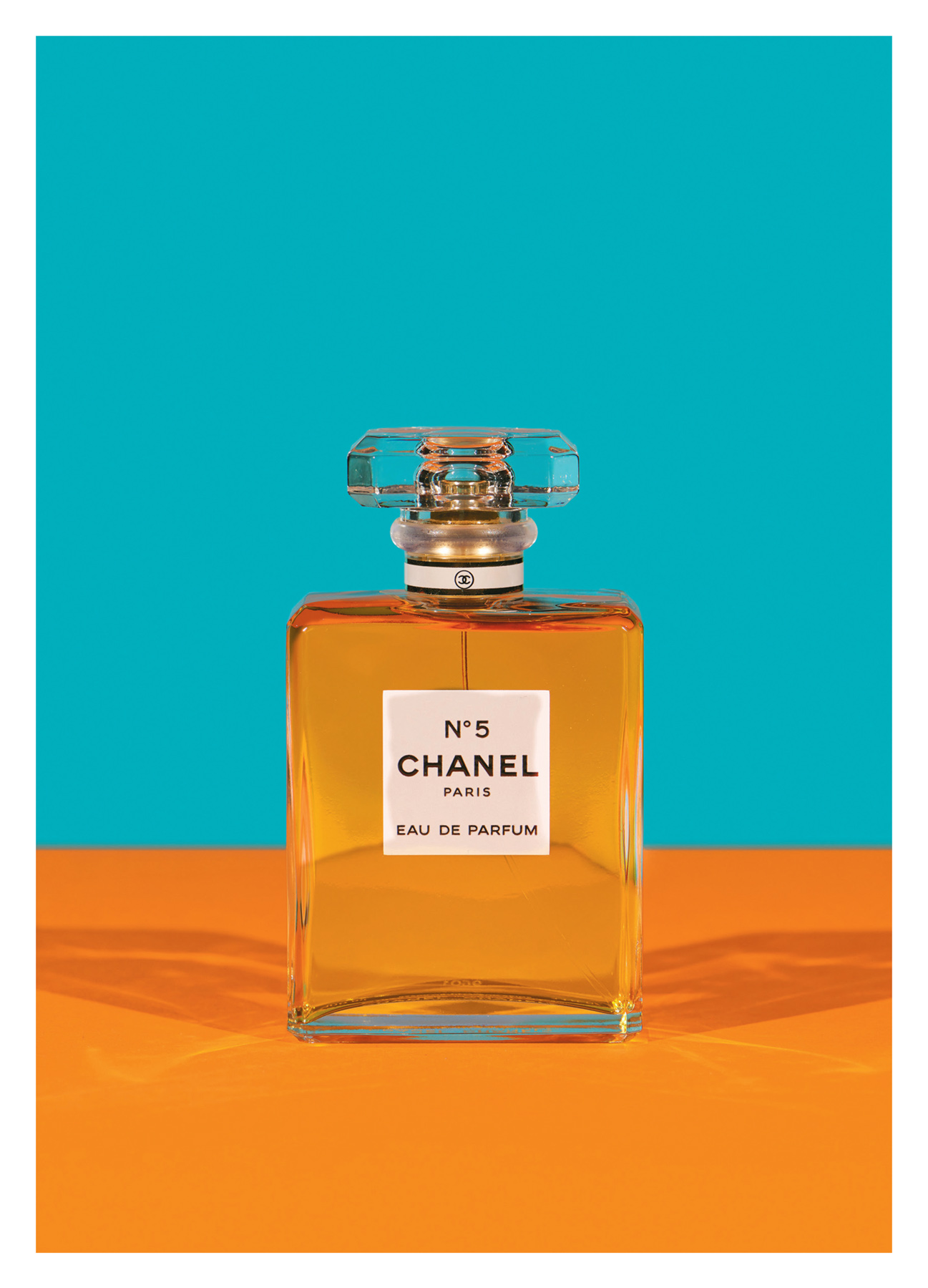
MAC Ruby Woo Lipstick
To choose a favourite red lipstick is impossible. You might as well ask me to name my favourite child. But ask me for the most iconic, and the answer comes easily. Ruby Woo is an ultra-bold phone-box red launched in 1999, effectively as a slightly more vivid, super-matte version of MAC’s (already matte) Russian Red, the lipstick favoured by Madonna during the ‘Who’s Girl?’ and ‘Blond Ambition’ years (and consequently bought by me, of course). Ruby Woo became an instant bestseller and, until a Kardashian-Jenner told the world she wore its less interesting stablemate Velvet Teddy, was MAC’s most popular lipstick – no mean feat when you have both a colour and formulation that’s pretty hard for most women to wear. Ruby Woo is extremely matte. Glide silkily across the mouth like butter on hot toast, it does not. It more chugs along like wellies down a wet slide. What it gives in superb longevity, it robs in moisture. Its blue base, while fabulous for whitening teeth and making an impact, demands the level of confidence of a seasoned red-wearer.
But none of this matters, because Ruby Woo is meant to be a loud statement by an uncompromising woman. It’s not meant to be pretty, it’s designed to be fabulous, and on that it more than delivers. It looks glorious against extreme hair colours – platinum blonde or jet black – and on very pale, very olive or very dark skin (Dita Von Teese is a Ruby Woo fan – it looks sublime on her) and is the perfect vintage rockabilly red. It’s the kind of lipstick that belongs with tattoos, leather jacket and a hoop petticoat, or maribou mules and mink stole. Since launching Ruby Woo, MAC has introduced a specially tweaked version for Ruby Woo fan Rihanna, called RiRi Woo, plus a much needed Ruby Woo liner, and a matching lip gloss. The latter rather misses the point for me. This is a true red shade for strong women who love proper lipstick, not for those who can’t take the heat.
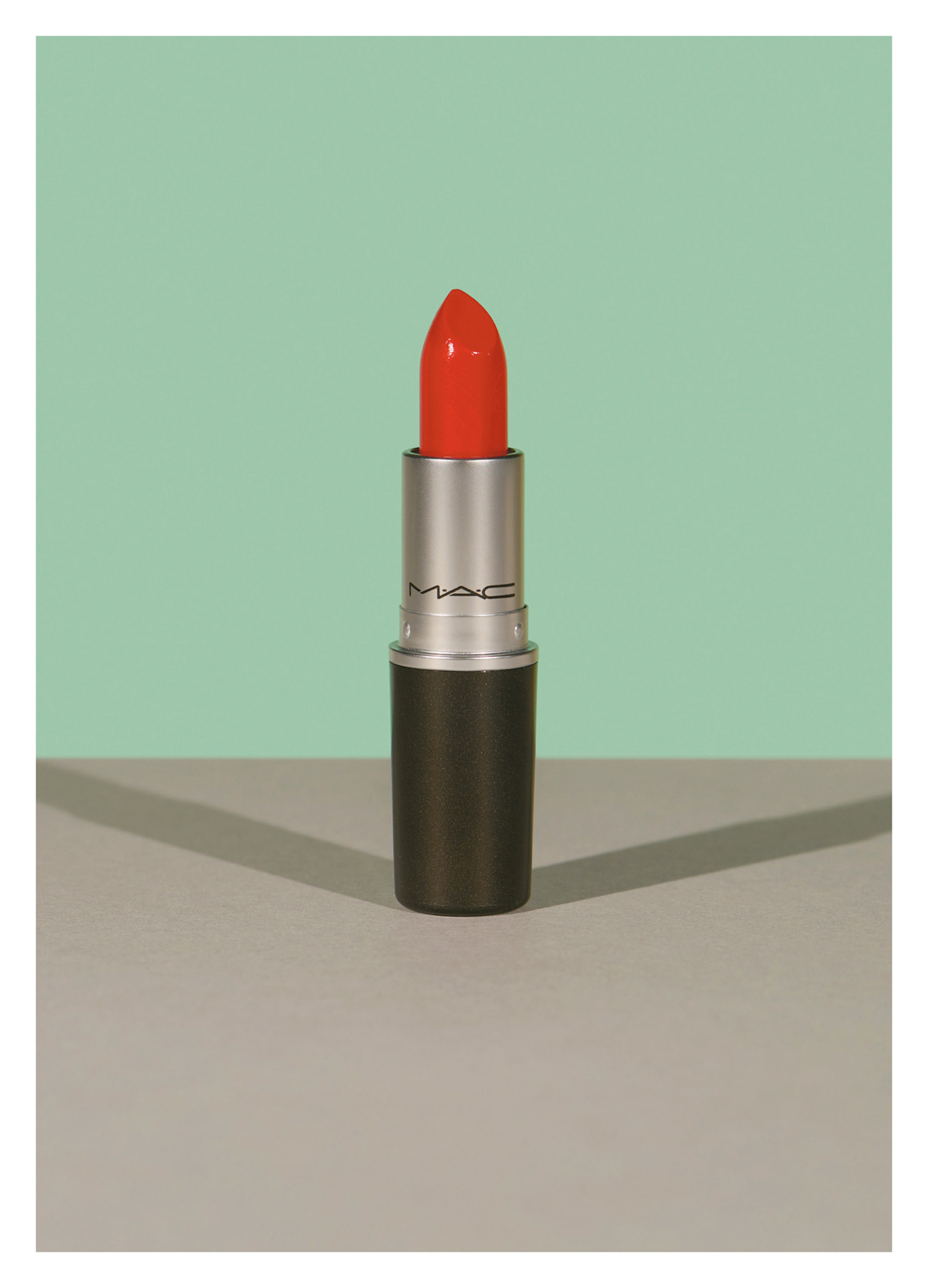
The Parlux Hairdryer
Similarly to boyfriends, I didn’t realise how needlessly rubbish 99 per cent of hairdryers were – and still are – until I found a brilliant one. For years, I thought good haircuts existed only for one day, when a professional could magically dry them into shape. After that, I was on my own with the hot, noisy, smelly hunk of plastic that woke the kids, scared the dog and left my head with the functionality of a Van de Graaff generator. In Britain, they were bad. Plugged into an American hotel wall, they were tear-inducingly awful.
And then there was Parlux. These are professional dryers available in any salon supply store for the not inconsiderable sum of around £80/$120/100 euros. They’re quite old-fashioned-looking (not in a particularly pretty way) and weigh about the same as a newborn baby in chainmail, which is why you should opt for the Compact model (already heavier than the average dryer) or the new Power Light, which have all the same features as their mother. All will style your hair in a way you previously thought impossible.
The impressively fast motor halves drying time, the three temperatures and speeds (in general, you want to start hot and fast and move down the settings during your blow dry, as a hairdresser would) give excellent shape and smoothness, and the high wattage makes a joke of your last dryer. Crucially, the Parlux has a proper cool shot setting, rather than a puny burst of tepid air offered by high street dryers. This allows you to properly set your style; leaving hair warm is like putting on a hot blouse straight from the ironing board. It’ll ruin again in seconds. The unit is sturdy too. I’ve dropped my Parlux many times, and while I’d caution against recklessness, I must commend my 11-year-old dryer’s stoicism – on and on it nobly goes. I’ve since moved on to a newer, similarly brilliant professional dryer (namely, the Hersheson) and bestowed the Parlux onto my gloriously thick-haired assistant, but only because the former is a little lighter. Age has not withered the Parlux, only weakened my right arm.
Dior Diorshow Mascara
I find natural mascaras to be rather missing the point. I don’t enhance my determinedly straight, short lashes to look like I have normal ones. I want them to be long, thick and fluttery like a Hereford cow’s. I want good separation and a brush that coats hairs, not eyelids, and a formula that doesn’t dry out in a matter of weeks. It seems so little to ask and yet is amazingly hard to find. It seems Pat McGrath, genius make-up artist, felt so similarly ill-served by the dramatic lash mascaras available that in 2001, she took a pile of toothbrushes backstage at the Dior catwalk show. The fat, dense bristles, when coated in black mascara, gave models a fanned, false lash effect that made lashes noticeable even to those sitting in the back row.
Inspired by McGrath’s ingenuity, the product development team set about designing a commercially available mascara that created the same look as the somewhat impractical toothbrushes. The result was Diorshow, a sleek, elegant silver and black tube housing a fat brush that could perhaps clean the loo in a crisis. It was an instant bestseller and in my experience is the mascara most likely to make a red carpet appearance on a starlet’s lashes. Make-up artists adore it, customers can’t get enough of it. It gives lush, dark, bovine lashes to those previously deprived, layers brilliantly, and has good staying power on most. It smudges on me, but unless you’re a serial mascara smudger, don’t let that put you off – my dry skin is so thickly basted in greasy moisturiser that it could smudge a tattoo. Diorshow now comes in an additional, waterproof formula and several permanent and seasonal colours. Which is all very nice, but my mascara motto will always be Go Black or Go Home.
Estée Lauder Double Wear Foundation
Sometimes a single beauty product is so huge, so instantly recognisable and ubiquitous, that it becomes an entire brand in its own right. Such is the case with this, the world’s bestselling foundation and the base readers most often rave about at my events. Launched in 1997, Double Wear was designed to stay on, come what may, and it certainly does that. It doesn’t transfer onto clothes and would probably survive nuclear holocaust to perfect the complexions of cockroaches and Keith Richards. Its shade range is ethnically inclusive, as is typical of American (as opposed to French) brands, its price is neither prohibitively obscene nor suspiciously low. The full coverage formula covers spots, blemishes, blotches, melasma and even faint scars but remains surprisingly comfortable to wear. It is, in my experience, what male and female popstars are most likely to wear on a hot, sweaty tour stage.
Despite my uneven skin pigmentation, Double Wear is not my own foundation of choice, because my skin is otherwise clear and to cover it so opaquely feels a little like throwing out the baby with the bathwater. Others criticise Double Wear’s ‘heavy’ and not entirely natural-looking finish, but while I take their point (with the reminder that Double Wear still looks way more realistic than any foundation launched pre-1995), I’m not personally of the opinion that make-up’s role should always be that of ‘convincing liar’ anyway. How joyless and dull. If that were the case, there’d be no red lipstick. An unthinkable tragedy indeed.
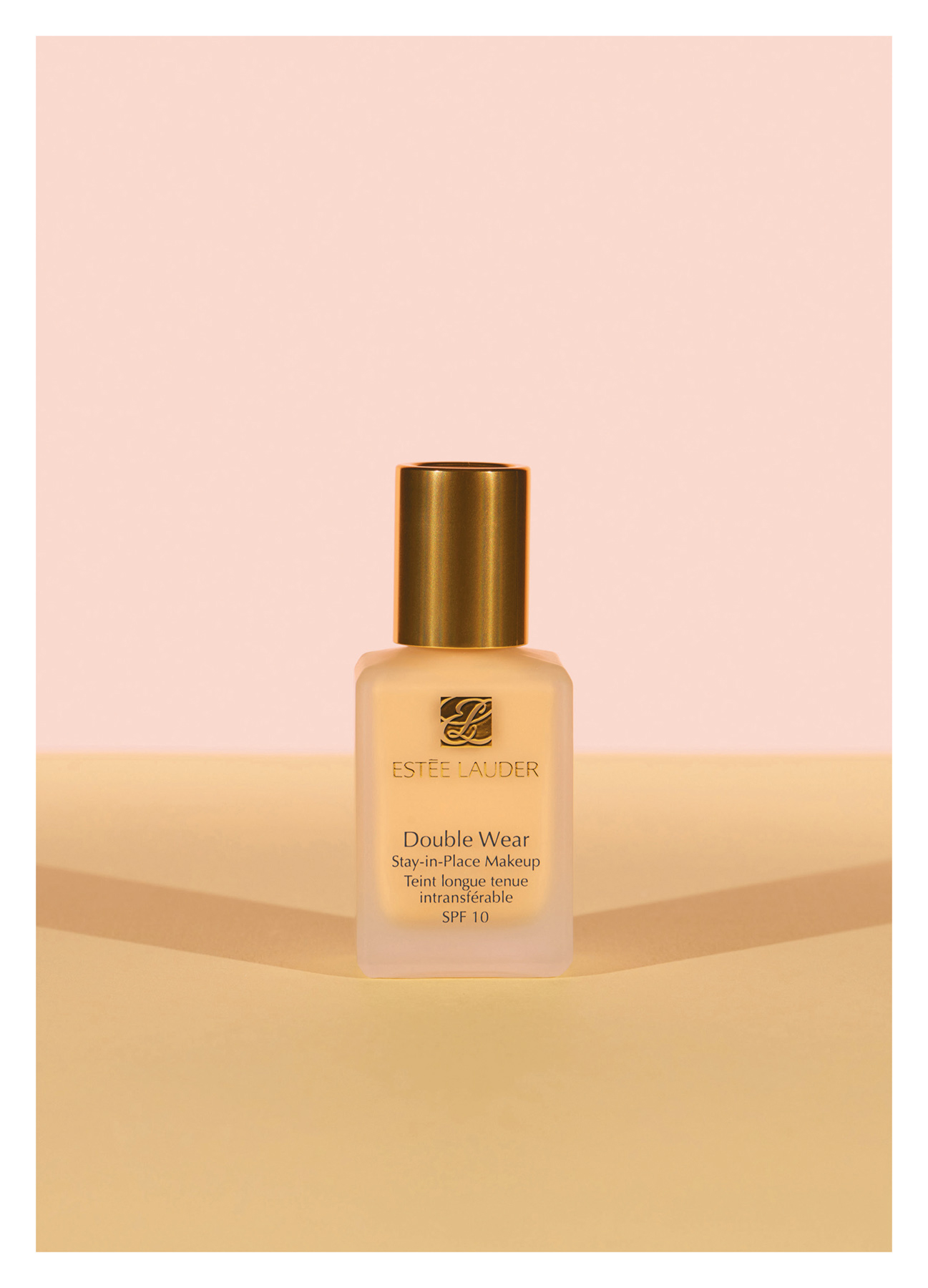
Clinique Almost Lipstick in Black Honey
In 1989 Clinique launched a new type of lip colour. Almost Lipstick was ‘not quite a lipstick, not quite a gloss, but the best of both’, and I was instantly intrigued. There were six shades in the range (Ruby Melt – the first sheer red I’d seen – was given to me by my brother David, much to my giddy joy), but the jewel in the crown was Black Honey, a blackberry stain without the jammy stickiness. Black Honey was so sheer, forgiving and thin of bullet (Almost Lipsticks came in a slender, stylo-type applicator) that it could be applied in mirrorless nightclub loos or standing on a bumpy night bus, or even while driving a car, as demonstrated by Julia Roberts, who slicks on Black Honey while behind the wheel in nineties film Stepmom. It made the wearer seem dressed up without looking try-hard. I was, and am, a huge fan myself and wore it throughout the nineties, but it looks good on literally everyone. As long as you had Black Honey in your kit, you could make any woman, regardless of age, race, hair or skin tone, look pretty great.
The rest of the shade line-up failed to make as much of an impact and so, some years later, Clinique axed Almost Lipsticks, leaving only bestseller Black Honey as a stand-alone product. I can think of few other examples of a single shade becoming so popular that it outlives its entire product line, but in this case it’s wholly deserved. Clinique rolled again and relaunched Almost Lipsticks in the early 2000s, this time capitalising on its hero-shade’s popularity by namechecking it throughout the rest of the range (Flirty Honey, Lovely Honey, Bare Honey and so on), but by now lip stains and tinted balms were ten a penny and the second-generation shades failed to take off. Almost Lipsticks were withdrawn yet again, with one inevitable exception. We’re still sweet on Black Honey.

Max Factor Creme Puff
Max Factor’s Creme Puff face powder is one of the first make-up items I was ever really aware of. As a tiny girl I would sit next to my grandmother on the bus and, as we neared our destination, watch her reach into her handbag for a gilt Stratton compact housing a pan of Creme Puff. She’d sweep the sponge over her nose and chin briskly and unfussily before clicking it shut, but just long enough for the strong, sweet baby powdery-smelling particles to become airborne and scent the whole top deck.
That Creme Puff smell, unchanged in six decades, still does strange things to me. It is one of the most instantly affecting, most nostalgic of fragrances. It smells of my nan, yes, but mostly Creme Puff just smells unapologetically of make-up (much like Dior lipstick does, or Bourjois powder rouge) at a time when make-up often smells of nothing at all. None of this sensitive skin molly-coddling, the Max Factor face powder hits you with a proper old-fashioned dressing-table smell and you’ll bloody well like it. Fortunately, I love it. And if you’ve ever hovered over your gran’s open handbag, trying to breathe in the interior’s scent, then you will too.
Creme Puff is glamorous, feminine, special. It’s not minimal, or pretending to be state of the art – it’s an old-fashioned formula that made golden age Hollywood actresses like Ava Gardner, Vivien Leigh and Jean Harlow appear flawless and luminous on set. It continues to do the job extremely well today, in its seventh decade (though sadly, its nostalgia is misplaced in its Caucasian-only shade range). Creme Puff is soft and creamy, with excellent coverage, and gives a matte finish without ever looking chalky. It contains light-reflecting particles to mimic a smoother, clearer surface. It’s perfect with retro red lips, black flicks and falsies, but also its full, layerable coverage makes it a great way to skip foundation on a more natural face – just brush over moisturiser and concealer. It’s a product I use rarely, but I would never pack a full kit without it because sometimes it’s exactly what a look needs, and the only thing that will do.




